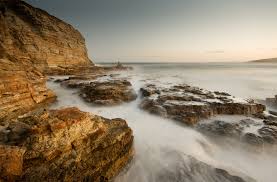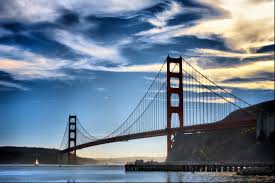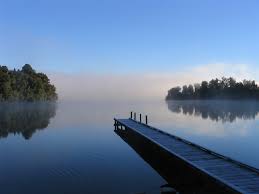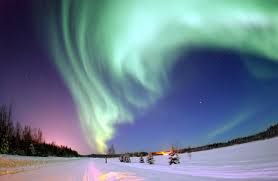ABC, 123
On the eve of July 4th, let's talk about what is, arguably, the whole point of the Declaration of Independence: life, liberty and the pursuit of happiness. Why is that phrase so easy to remember? Why does it seem to roll off the tongue? It's because it follows the rule of three. Groupings of three are memorable when you hear them, pleasing when you see them. Of course, that's why we all can recall Columbus' three ships: the Niña, the Pinta and the Santa Maria. We can remember Benjamin Franklin's advice: early to bed and early to rise makes a man healthy, wealthy and wise. And let's not forget the Jackson 5 (see title of this blog entry).
But it's not just about words; it's an essential part of videography and photography - we want to frame our shots so the image is divided into a box that's 3 x 3. It just feels better that way.
San Francisco fireworks in the fog, taken by Eliya on July 4, 2008.
Today's story was a preview of tomorrow's fireworks celebration. The crews in charge were loading the launchers with mortars all afternoon. The San Francisco show is really something to see, if you can see it. The problem is summer in San Francisco usually entails lots of clouds and fog. So quite often, the fireworks are launched with great fanfair and anticipation, only to have them explode in the clouds, yielding a fuzzy blur of color rather than a brilliant shower of sparks. That's the story background.
The three basic elements (yes, that number makes it easier for the students to remember) I tell my students to look for in a TV story are:
- So what (what difference does it make): the July 4th show in San Francisco is HUGE deal, drawing hundreds of thousands of people to watch.
- Real people: no one really, because the show is tomorrow. I'm going to only interview the pyrotechnics expert.
- Show me don't tell me (video): the preparations taking place today ahead of tomorrow's show.
To be honest, there wasn't a lot of new information the viewers haven't already heard. This is an annual story with the same elements: fireworks + fog. So how to make this story different? I decided to apply the rule of three in several different ways: writing, shooting, editing (there we go again).
Watch THE STORY below and pick out each time the rule of three is used: it's in the voice track, it's in a sequence of shots, it's in the way the story was assembled and edited.
One thing beginning TV reporters quickly learn is, no matter the city where they're working, there's always a place to get the perfect shot quickly and without a lot of hassle. But knowing where that shot location is only comes with experience. As reporters move into new markets, there's a learning curve to discovering where the ideal Black Friday story background is, where it's easy to find parents willing to talk about taking kids back to school, which hospital is media friendly. Time, experience - there's no substitute.
I recalled that today as I was running out of time to shoot my standup. I had determined early in the day I wanted to do a two-part standup showing both locations from which the fireworks would be launched. The first was Pier 39, an area congested with tourists. But, a quick call to the public relations person got me a primo parking space and I was in and out in 15 minutes. The second spot was different. Because I'd spent a lot of time there while I lived in San Francisco during the 2000s, I knew it wasn't as tightly controlled; I knew the shot would look great; I knew the fastest way to get there; I knew where to park. Having that background experience saved so much time.
When you can, spend time being creative; make your stories different from the rest. News directors look for that when they're hiring. Non-linear editing software makes it easy to incorporate some fancy moves that can help make your package stand out. Don't go overboard. Make sure each edit has a purpose. Watch THE STORY below and notice how the standup helped tell the story.
Takeaways:
- Remember the rule of three. It helps your writing, your editing, your shooting. It helps you turn more creative, memorable, polished stories.
- Learn where to go. In every TV market, there are places that are ideal for certain stories. MMJs who are new to the market don't know them. Talk to the veterans in your newsroom. Knowing which location is easy to quickly get to, offers ample parking and provides a compelling and appropriate background is gold - it saves time, which you always can use more of on deadline.









